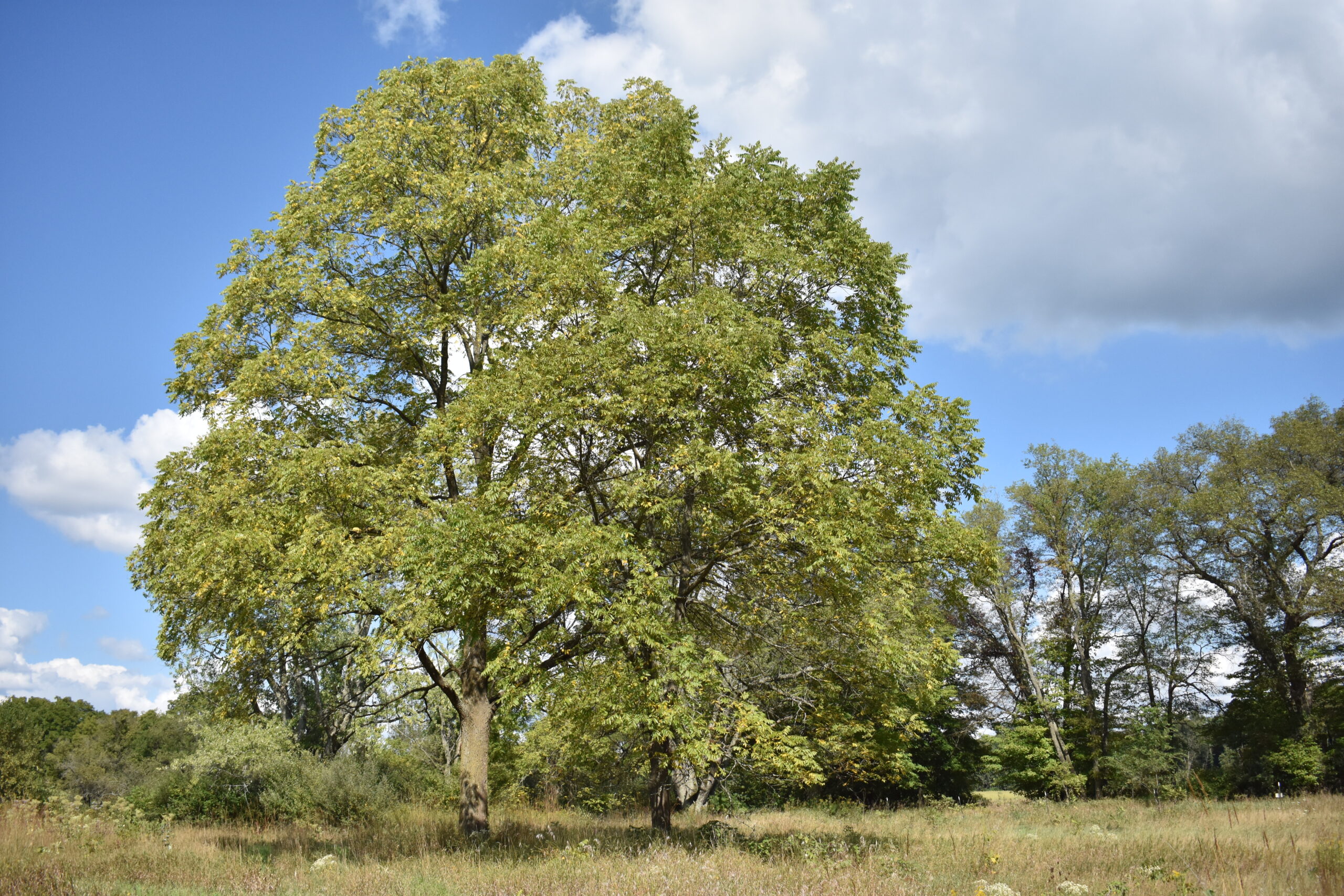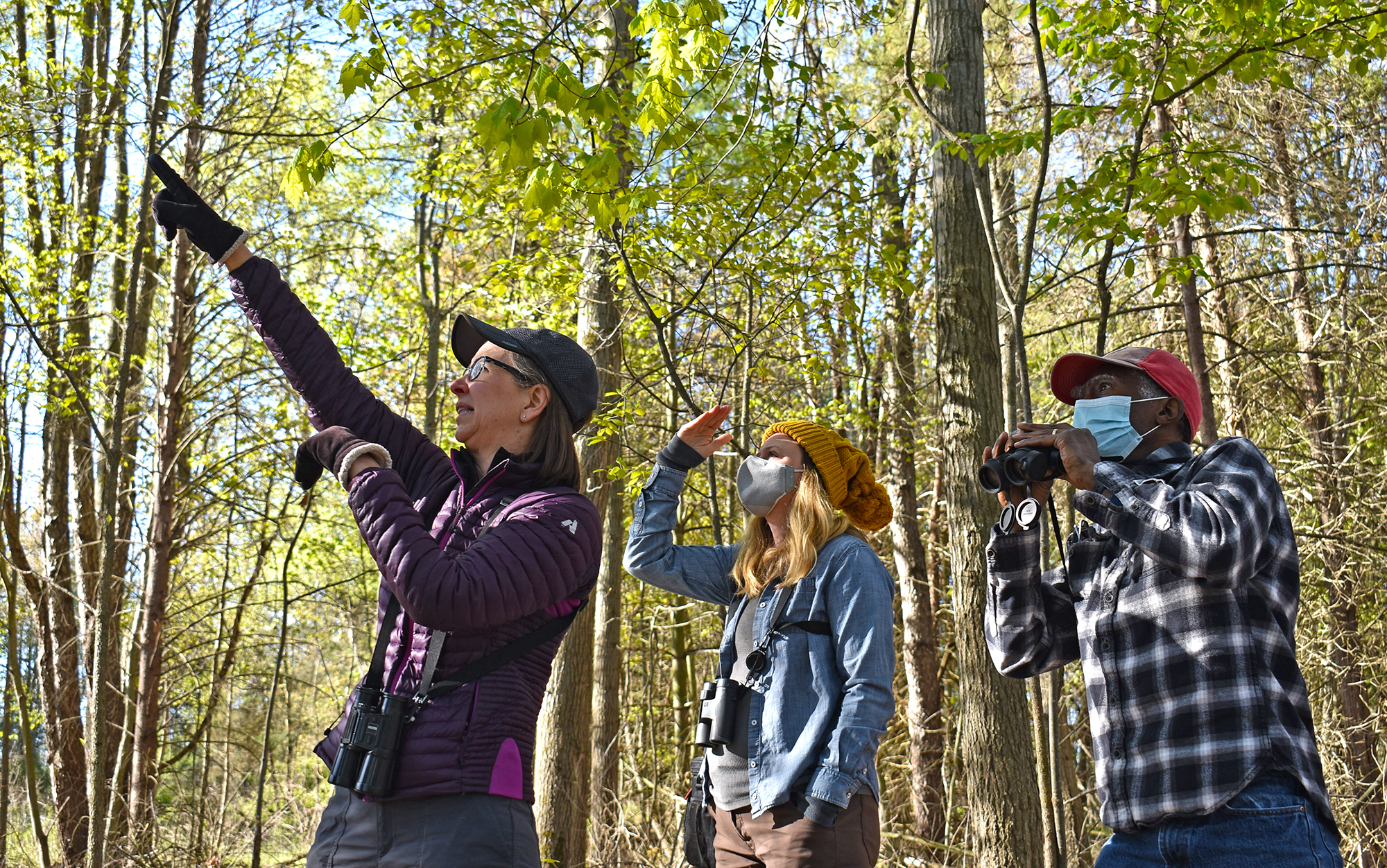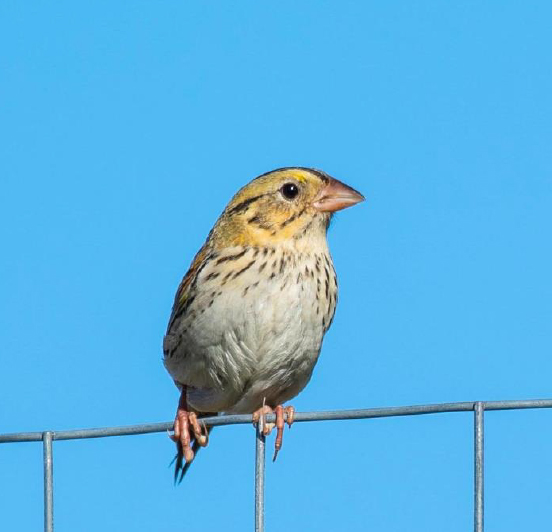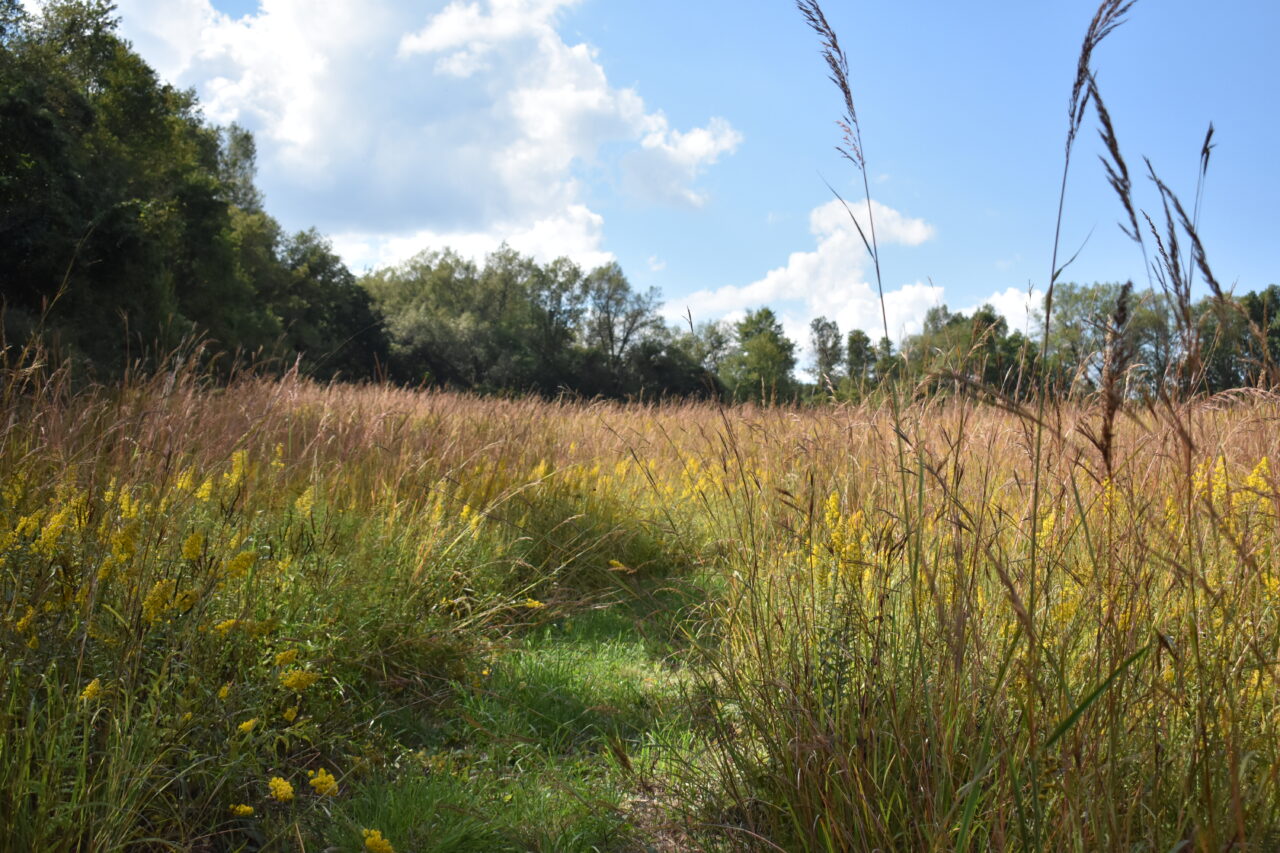Southwest Michigan Land Conservancy
Why Bird Conservation?
“Our volunteers love knowing that their birding contributes to conservation,” says Mitch Lettow, Stewardship Director at Southwest Michigan Land Conservancy (SWMLC). Dubbed the “Bird Herders” by Lettow, this group of eight to ten volunteers monitors 14 sites protected by SWMLC annually, following a bird monitoring protocol to assure the quality of the data they collect in eBird.
Development of the bird monitoring protocol was funded in part by a Cornell Land Trust Bird Conservation Initiative small grant in 2020. SWMLC worked with partners at Western Michigan University (WMU) to establish the monitoring protocol, and graduate students under Professor Sharon Gill conducted the initial bird surveys.
Biodiversity is a core value of SWMLC, according to Lettow. Birds have an almost universal value, he says. They are colorful and easy to hear, which makes them great ambassadors for the work that SWMLC does to improve wildlife habitat and connect people with nature.
Lettow says, “We want to play a role in preventing the decline of bird species.” So, along with recruiting and training volunteers to continue the bird monitoring after the initial year, this project also included bird-friendly habitat management on 291 acres of grassland and oak savanna sites.
Spotlight Resources: Bird-focused Habitat Management, eBird, Outreach Video

oak savanna restoration at the SWMLC Hidden Pond Preserve. Photo credit: Amelia Hansen, SWMLC
Oak savannas are unique and endangered habitats found in the Midwest of the United States. Characterized by scattered oak trees growing among a rich diversity of wildflowers and grasses, oak savanna habitats are threatened by shrub and tree succession, which can close in on the light-loving species that are necessary to create good habitat structure for grassland birds. Prescribed burns were conducted on SWMLC properties to help set back woody succession in these oak savannas.
Another type of management used by SWMLC at the Portman Nature Preserve was thinning of timber to create canopy gaps that allow more sunlight to penetrate the forest floor. More sunlight reaching the understory means more botanical diversity on the ground; the intention was to create a more diverse woodland structure in order to support greater bird diversity. Lettow notes that he’s already beginning to see more rare and uncommon plants at the site where the canopy thinning occurred.
Hopefully, more rare and uncommon birds will follow. An Orchard Oriole has been spotted at one site, and a Blue-winged Warbler was recorded at another. A Red-headed Woodpecker was seen at Portman Nature Preserve, where the canopy thinning took place, which Lettow takes as a sign that habitat-management efforts are beginning to work. Word of unusual bird sightings tends to spread in the birding community, a welcome side effect of habitat-management work, as the presence of unusual birds give birders more reasons to explore SWMLC properties.
To see the landscape through birds’ eyes would be ideal, Lettow says, but the next best thing is to observe birds through our own eyes and share that data with scientists through eBird. After the bird monitoring protocol was developed and established through this grant, volunteers were recruited and trained to help with this work. Bird monitors were trained on the protocol, which includes step-by-step instructions and screenshots about how to enter data in eBird.

Bird monitors need to be confident in their bird identification skills, and are asked to conduct surveys three times, on three separate days, over the course of the breeding season. While this monitoring requires a commitment and a certain level of expertise, new birders are encouraged to visit SWMLC preserves and contribute data to these “hotspots” through eBird too. A YouTube video titled Birding at SWMLC Nature Preserves was produced to help inspire birders of all levels to get involved.
A page on SWMLC’s website proclaims “You Can Make the World a Better Place for Birds,” and invites visitors to join their citizen science project. With links to the YouTube video they produced and information about SWMLC preserves, the page encourages birds of all levels to contribute their observations via the eBird app.
Making the Connection

It’s challenging to have so much data, notes Lettow, but eBird is instrumental in collating all of it. He works with WMU Professor Sharon Gill to analyze the bird monitoring data, and will be giving a joint presentation with her this spring. At a meeting of the local Audubon chapter in Kalamazoo, Lettow and Gill will share findings from four years of bird monitoring on SWMLC preserves.
Lettow can’t be everywhere at once to monitor birds and SWMLC doesn’t have staff capacity for analyzing years of bird data, so partnering with volunteers and academics is essential to the ongoing success of this project.
Advice to Other Land Trusts
If applying to this specific grant program, Lettow advises taking advantage of its flexibility. Think outside the box and use its unique focus to accomplish bird-friendly habitat improvement work on your preserves.
While many grants fund habitat restoration, he notes that its often difficult to find funding for habitat and wildlife monitoring, which this grant program funds. This project allowed SWMLC to establish a monitoring program that continues to this day with the help of volunteers, and this grant project also connected Lettow with new perspectives and tools from the Cornell Lab of Ornithology that were not previously part of his day-to-day work.
Next Steps

This grant project changed Lettow’s perspective and rewired his thinking, he says. After seeing some bird species in the least expected places, he’s rethinking his approach to grassland conservation. While he used to mentally separate agriculture and natural areas, his thinking is no longer so compartmentalized.
For instance, one of the smallest grasslands in the bird monitoring program was the most consistent site for the Eastern Meadowlark, a target grassland specialist. Covered with almost all non-native grasses, the site was an intensive agricultural landscape used for grazing—and counter to what many might prioritize for conservation. This led Lettow to think about how agriculture and conservation can happen in the same spaces, with better outcomes for grassland birds.
As a result of this, SWMLC began a pilot project to experiment with managed grazing where bison would have historically been, bringing sheep into one area to help with non-native grasses. It’s still too early in on to say whether it will work, but Lettow is interested in seeing if the presence of sheep will change what bird species are found on the site.
Maybe he’ll see Bobolinks there—a species that hasn’t declined enough to become endangered and get attention or funding, he says. This is a critical period for Bobolinks, he believes; it’s the window of opportunity where we may be able do something to save them, but it’s going to take creativity, cross-silo thinking, and the courage to try some new approaches.


